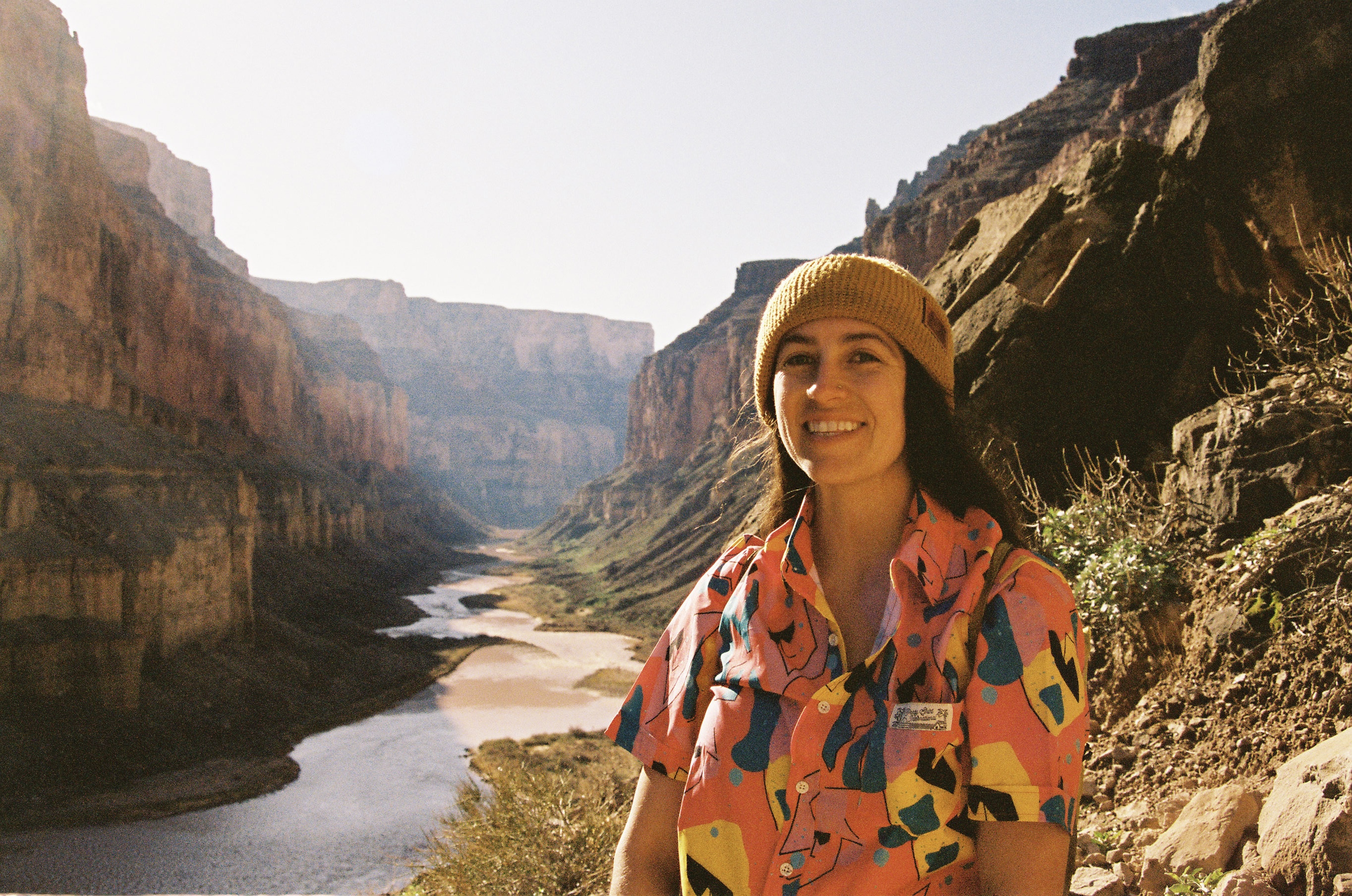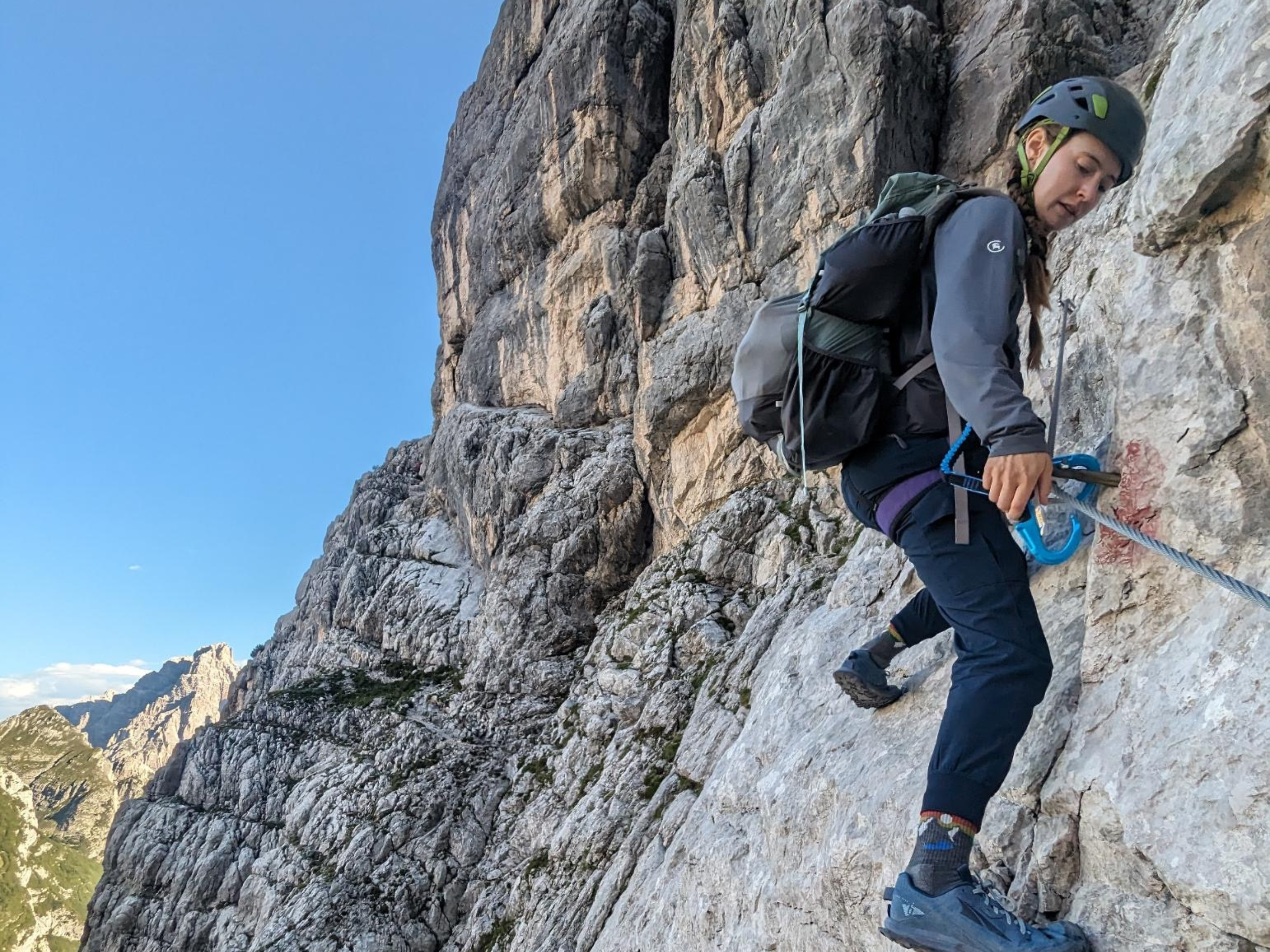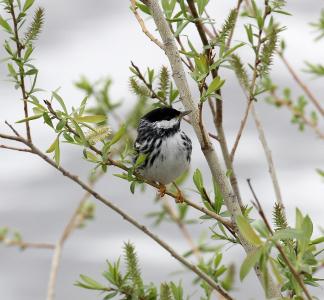Meet our 2024 Gloria Barron scholars!

Rachel Deininger and Mallory Sandoval Lambert
Selected projects study wildlife connections in Utah and expand cutting edge research methods in Alaska
Every year, we at The Wilderness Society are proud to empower the next generation of conservation leaders through the Gloria Barron Wilderness Society Scholarship. Named in honor of the eponymous devoted educator and conservationist, the scholarship provides project funding for graduate students seeking to understand and protect our natural world.
In some ways, this year’s selected projects could not be more different. One is an exploratory study focused on interactions and ecological connections between two very charismatic critters; the other is a technical project building monitoring and data collection capacity in wilderness. But at their core both projects are motivated by the same thing: a deep connection to nature held by their respective scholars.
“We are so excited about this year’s Gloria Barron Scholars,” The Wilderness Society Director of Research Mariah Meek, Ph.D. said, “Both of their projects are going to help advance our understanding of how to better conserve and protect species and wilderness.”
Meet this year’s scholars—Mallory Sandoval Lambert and Rachel Deininger—and learn about their projects:
Transcribed interviews have been edited for brevity and clarity
Mallory Sandoval Lambert

I grew up in Layton, UT, which is about 30 minutes outside of Salt Lake City. I grew up with a family who really enjoyed being outside, and throughout my young life I spent a lot of time outdoors being fascinated by wildlife. But I didn’t know that wildlife ecology was a profession.
When I got to college, I started out in biology until one of my professors said, “If you’re not a medical student, this class is going to be very hard for you.” Then I switched to being a Fine Arts major. It was kind of a drastic change, but I've always kind of had these two loves of art and animals in nature. I kind of thought it was a natural transition and did art for a few years until I realized I wasn’t fulfilling part of my brain.
I switched back to biology and was introduced to Johanna Varner (a former Gloria Barron scholar), who's now a professor at Colorado Mesa University. She needed a field assistant to help study American pika in the Columbia River Gorge. She kind of like took me under her wing and showed me that you can work with animals as a scientist out in the wild.
A little while before graduating with my Masters, I was helping Dr. Varner with a trapping project in the La Sal Mountains. While we were at camp, I looked up and I saw mountain goats feeding right at the talus edge, which is also where pikas feed. Mountain goats and pikas naturally co-occur through parts of their ranges; however, I knew that this group of mountain goats was introduced by humans. It suddenly made me curious if anyone has investigated if interactions occur between these two species either in the mountain goats' native or introduced range. I sort of voiced that aloud, and Dr. Varner encouraged me to make a project of it.

The Manti-La Sal National Forest in Utah
Mason Cummings
The research is meaningful to me because—and I think this kind of taps into my inner child—but pikas and mountain goats are my two favorite animals. It's a very simple and I think a lot of scientists would think it's too squishy of an answer, but I feel very honored to be around them and working to understand their ecology better. I feel very passionately about treating wildlife more like we're sharing the planet with them, because, indeed, we are! I look at research as a way to better understand systems and so that we may better coexist with the natural world.
I think it could also be really valuable because Alpine ecosystems—including pikas and mountain goats—are vulnerable to the effects of climate change. Understanding the nature of their interaction can be important in anticipating what type of changes within that interaction might occur, and what cascading impacts might be felt on the entire ecosystem. But to start, my aim is to understand what types of interaction exist between these two species.
I also ran this educational program during my masters program called EcoPenPals. I collaborated with my cousin—who at the time was a second grade teacher at a mostly low-income school in Boston—and a rural school in Wyoming where I was living at the time. I visited both schools, led them on nature walks and had them write letters to students at the other school to talk about their local nature. I wanted to run the program again, but I haven’t had funding. Now I’ll be doing it again with schools in Ogden and Moab.
The Wilderness Society is proud to support Mallory’s work. Mariah Meek offered the following: “[Her project] will provide a better understanding of the interactions between sensitive alpine native species and introduced game species to help make predictions for how those interactions will shift under future climate change.”
Rachel Deininger

I’m originally from North Carolina. We were near Chapel Hill, which is a larger college town, but we actually lived in the middle of the woods—most of my life was just spending time outdoors in the forest. My mom is an environmental consultant, but she used to work for a nonprofit stewardship group that works to protect the Haw River. So I always had people around me who I could ask questions, but I also had people who shared my interest in being in a creek looking for macro invertebrates or figuring out what species of trees were around. I think that stemmed a lot of my interest in being able to look at a landscape and understand how it works.
I did my undergrad out in Georgia at Emory, where I studied Environmental Science and Earth and Atmospheric Sciences. I didn't get exposed to GIS in the field of remote sensing until after I finished my undergraduate degree and took an internship with NASA. It was a ten-week program focused on exposing early career scientists to the field of remote sensing. That’s where I learned to code. We were like, “Okay none of us know how to code, so I guess we're teaching ourselves JavaScript so that we can work with Google Earth engine to actually complete this project.”
I wanted to get academic experience in GIS, so I ended up pursuing a graduate certificate at UNC Chapel Hill. From there I applied out to different masters programs following my interests in botany and forestry, which led me to focusing on LIDAR (Light Detection and Ranging). I was really thrilled to find a technology that I could use to study in-depth. I also just really like maps; at home I have multiple walls of maps that I’ve collected from different parks. I guess I really like the visual side of things and being able to study things in a geospatial sense.

Kenai National Wildlife Refuge, near Anchorage, AK
Tim Woody
My project is working with and processing terrestrial (ground-taken) LIDAR data collected outside of Anchorage, Alaska—calculating different forest structural metrics that align with Forest Inventory and Analysis (FIA) protocols. The baseline goal of this project was to test the capabilities of terrestrial LIDAR and see if it could be used in conjunction with FIA data or be used to build upon or replace FIA data. We’re trying to do something that’s comparable with FIA standard, which could be used with a future project to upscale to aerial LIDAR.
In a lot of protected places, you're not allowed to set up any form of permanent monumentation, which means you have all of these forests in wilderness areas and national parks that aren’t getting measured. Which is where something like LIDAR comes in, because it's a form of remote sensing. Being able to monitor these large wilderness areas remotely would be important—if you have no idea that there is a landscape change occurring in an area, you don't even know if you should be managing it differently.
If we think about Alaska, a lot of the changes we're seeing are in black spruce forests. Black spruce grows in colder areas, like permafrost. As permafrost is melting out, we’re seeing the black spruce forests become what you call “drunken”—they start leaning over and bending, becoming more mixed deciduous conifer with cotton woods and white spruce and aspens and Birch trees.
We don’t know if this is a bad thing. We know that the landscape is changing, but we don't necessarily know what this conversion means. But again, my project focuses on being able to identify where this conversion is occurring, which is kind of just a very first preliminary step. To be able to start answering questions about these changes, we have to see where it's actually happening.
Mariah Meek said the following about Rachel’s project: “[This] work is using state-of-the-art resources to develop a long-term forest structure monitoring protocol that will help us identify areas of forest conversion to assist with wilderness conservation planning.”



